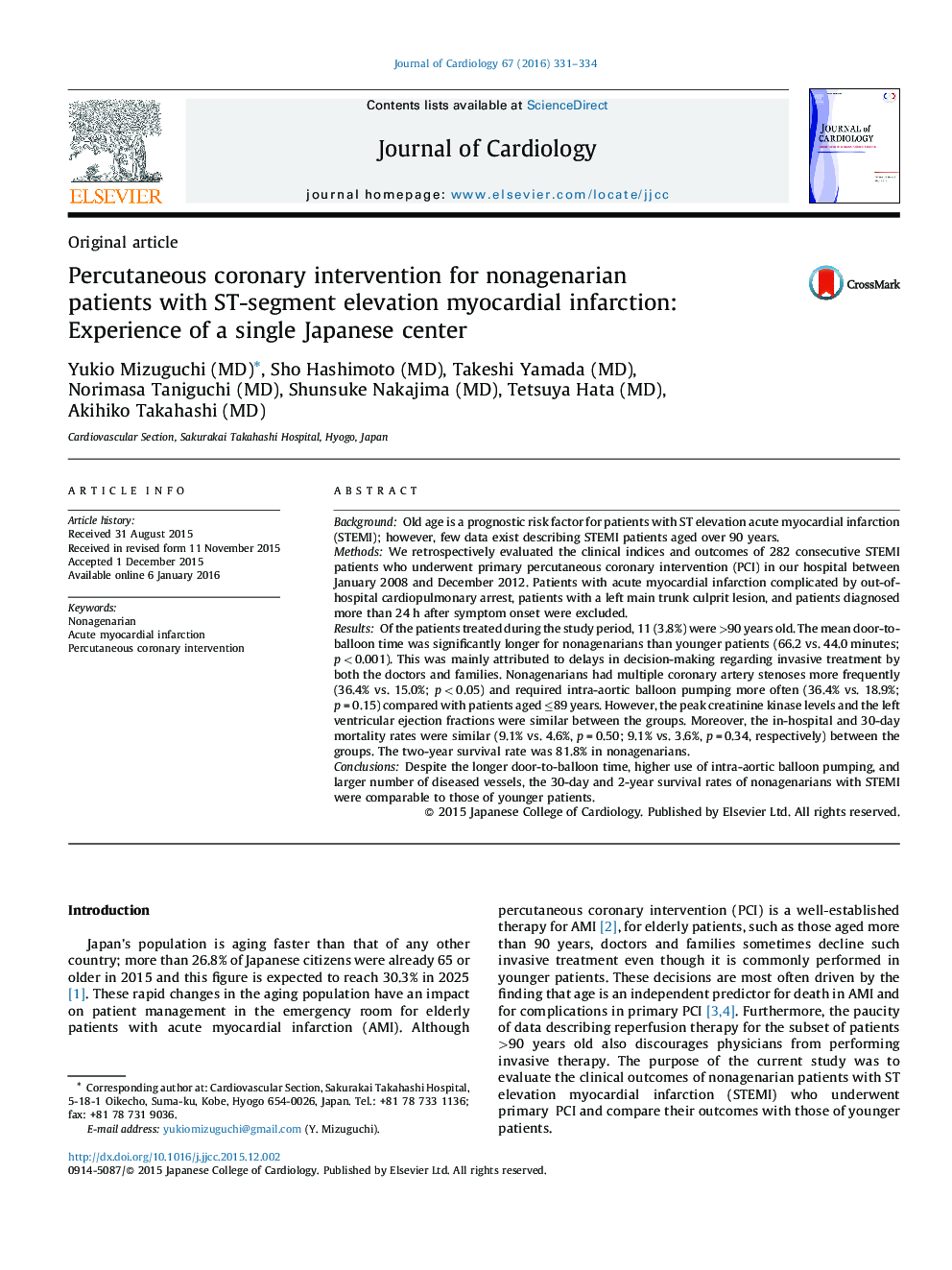| Article ID | Journal | Published Year | Pages | File Type |
|---|---|---|---|---|
| 2962860 | Journal of Cardiology | 2016 | 4 Pages |
BackgroundOld age is a prognostic risk factor for patients with ST elevation acute myocardial infarction (STEMI); however, few data exist describing STEMI patients aged over 90 years.MethodsWe retrospectively evaluated the clinical indices and outcomes of 282 consecutive STEMI patients who underwent primary percutaneous coronary intervention (PCI) in our hospital between January 2008 and December 2012. Patients with acute myocardial infarction complicated by out-of-hospital cardiopulmonary arrest, patients with a left main trunk culprit lesion, and patients diagnosed more than 24 h after symptom onset were excluded.ResultsOf the patients treated during the study period, 11 (3.8%) were >90 years old. The mean door-to-balloon time was significantly longer for nonagenarians than younger patients (66.2 vs. 44.0 minutes; p < 0.001). This was mainly attributed to delays in decision-making regarding invasive treatment by both the doctors and families. Nonagenarians had multiple coronary artery stenoses more frequently (36.4% vs. 15.0%; p < 0.05) and required intra-aortic balloon pumping more often (36.4% vs. 18.9%; p = 0.15) compared with patients aged ≤89 years. However, the peak creatinine kinase levels and the left ventricular ejection fractions were similar between the groups. Moreover, the in-hospital and 30-day mortality rates were similar (9.1% vs. 4.6%, p = 0.50; 9.1% vs. 3.6%, p = 0.34, respectively) between the groups. The two-year survival rate was 81.8% in nonagenarians.ConclusionsDespite the longer door-to-balloon time, higher use of intra-aortic balloon pumping, and larger number of diseased vessels, the 30-day and 2-year survival rates of nonagenarians with STEMI were comparable to those of younger patients.
